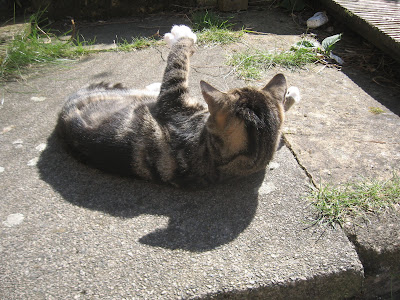 A boy using his new camera.
A boy using his new camera.
Illustration of the lens.
The first one is the Kodak Autographic Camera
(the link is to the instruction manual-the internet is a wonderful thing!)
All I saw in the charity shop was the beautiful worn leather case. I had a quick look but waited until I got home to investigate. It is a beautiful thing! It concertinas out of the case and has all sorts of satisfying little controls to twiddle. The photo the other day was taken through the lens-I have no idea how to do ttv (through the viewfinder) photography so that was my version!

In the back of the case it is described as a 'pocket camera'.
 Maybe my Oxford Bags will have the pockets for the job.
Maybe my Oxford Bags will have the pockets for the job.(What I imagine the boy above would be wearing)
 The camera was first patented in 1898. It has a wooden film spool and would take either postcard size plates or a film on a roll that was backed with red paper. The picture above is of a little door that opens. It is fastened with a little metal pen. You would open this door, peel back the red paper and then you could write directly onto the film, and your writing would appear when the film was developed. (Hence 'autographic')
The camera was first patented in 1898. It has a wooden film spool and would take either postcard size plates or a film on a roll that was backed with red paper. The picture above is of a little door that opens. It is fastened with a little metal pen. You would open this door, peel back the red paper and then you could write directly onto the film, and your writing would appear when the film was developed. (Hence 'autographic')The instructions explain why this was a good idea for the amateur-
'The Autographic Record as a Guide
Many amateurs have distinctly improved the quality of their work by making notes, at the time of exposure, of the prevailing conditions. As. Bright light, 1/25 sec., stop No. 8, which, by the way, can be easily abbreviated to: B. 1/25, 8. By keeping such records the amateur can quickly find the cause of failure, if any. By comparing negatives and records he will soon get a line on his errors and when he knows what his errors are, he can easily rectify them. It is obvious that the best way to make these records is autographically - on the film, at the time.'
This is all very well-but what a faff! I like the way it says 'the cause of failure, if any',
conceding that even the amateur may be able to succeed!

The other purchases take less explaining.
 Loved the colours of these cups.
Loved the colours of these cups.










































